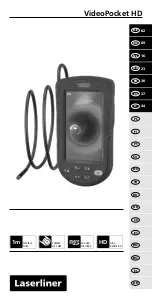
Section 3: Functions and features
Model 2651A High Power System SourceMeter® Instrument Reference Manual
3-14
2651A-901-01 Rev. A / March 2011
Statistic attributes
Use the
smua.buffer.getstats()
function to access the reading buffer data statistics. The table
below displays the attributes that you can use to access the reading buffer data.
The returned parameter has the following attributes:
Attributes for accessing reading buffer data
Attribute When
returned
Description
n
Always
The number of data points on which the statistics are based
mean
When
n
> 0
The average of all readings added to the buffer
stddev
When
n
> 1
The standard deviation of all readings (samples) added to the buffer
min
When
n
> 0
A table containing data about the minimum reading value added to the
buffer
max
When
n
> 0
A table containing data about the maximum reading value added to the
buffer
If
n
equals zero (0), all other attributes will be
nil
because there is no data to base any statistics on.
If
n
equals 1, the
stddev
attribute will be
nil
because the standard deviation of a sample size of 1 is
undefined.
The
min
and
max
entries each have the following attributes:
Min and max entry attributes
Attribute Description
measurefunction
String indicating the function measured for the reading (current, voltage,
ohms or watts)
measurerange
The full-scale range value for the measure range used when the
measurement was made
reading
The reading value
sourcefunction
String indicating the source function at the time of the measurement
(current or voltage)
sourceoutputstate
String indicating the state of the source (off or on)
sourcerange
Full-scale range value for the source range used when the
measurement was made
sourcevalue
If
bufferVar
.collectsourcevalues
is enabled, the sourced value
in effect at the time of the reading
status
Status value for the reading; the status value is a floating-point number
that encodes the status value into a floating-point value
timestamp
If
bufferVar
.collecttimestamps
is enabled, the timestamp, in
seconds, between when the reading was acquired and when the first
reading in the buffer was acquired; adding this value to the base
timestamp will give the actual time the measurement was acquired
bufferVar
is the name of the buffer. See
(on page 7-172) for additional information.
















































